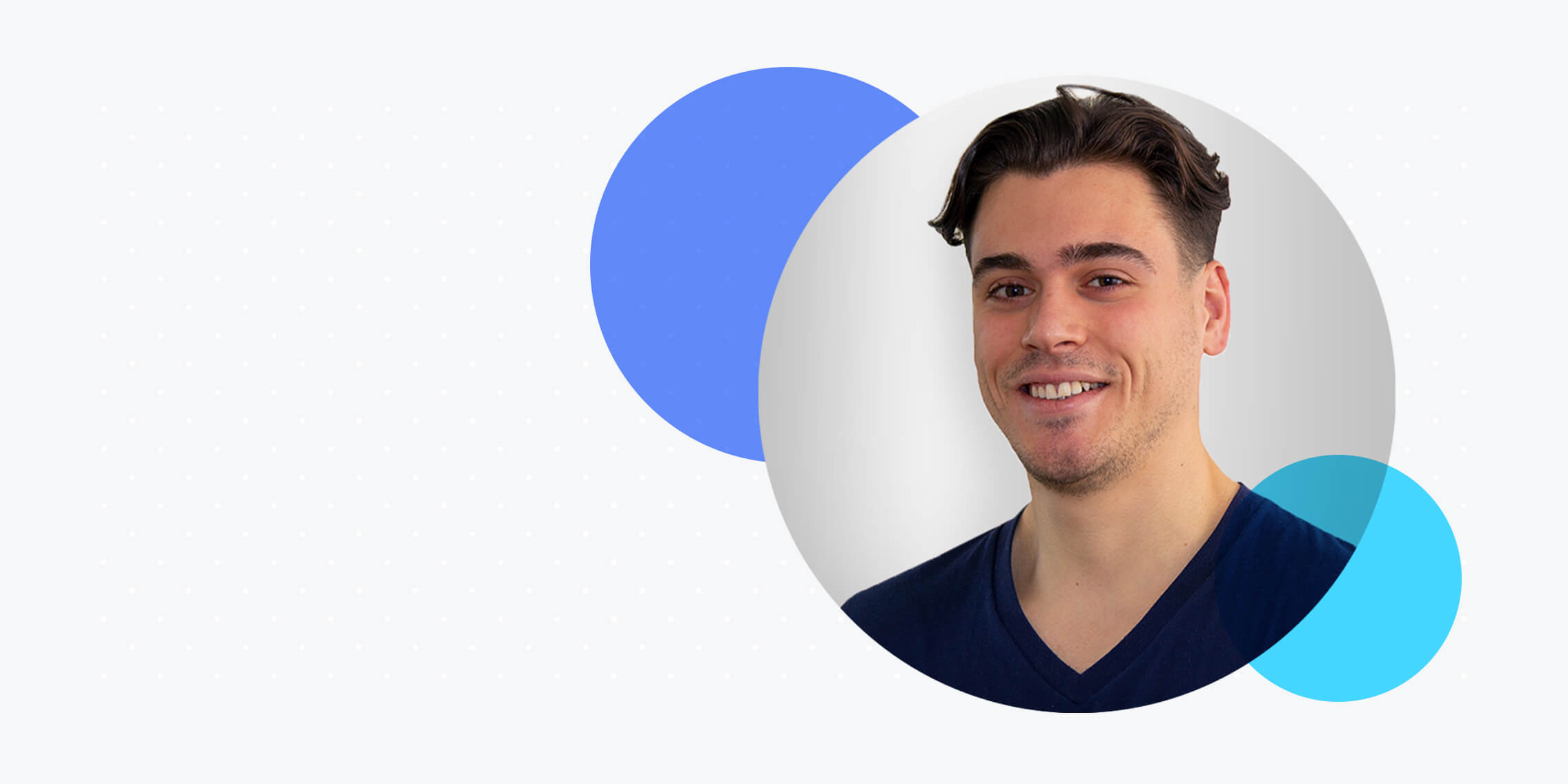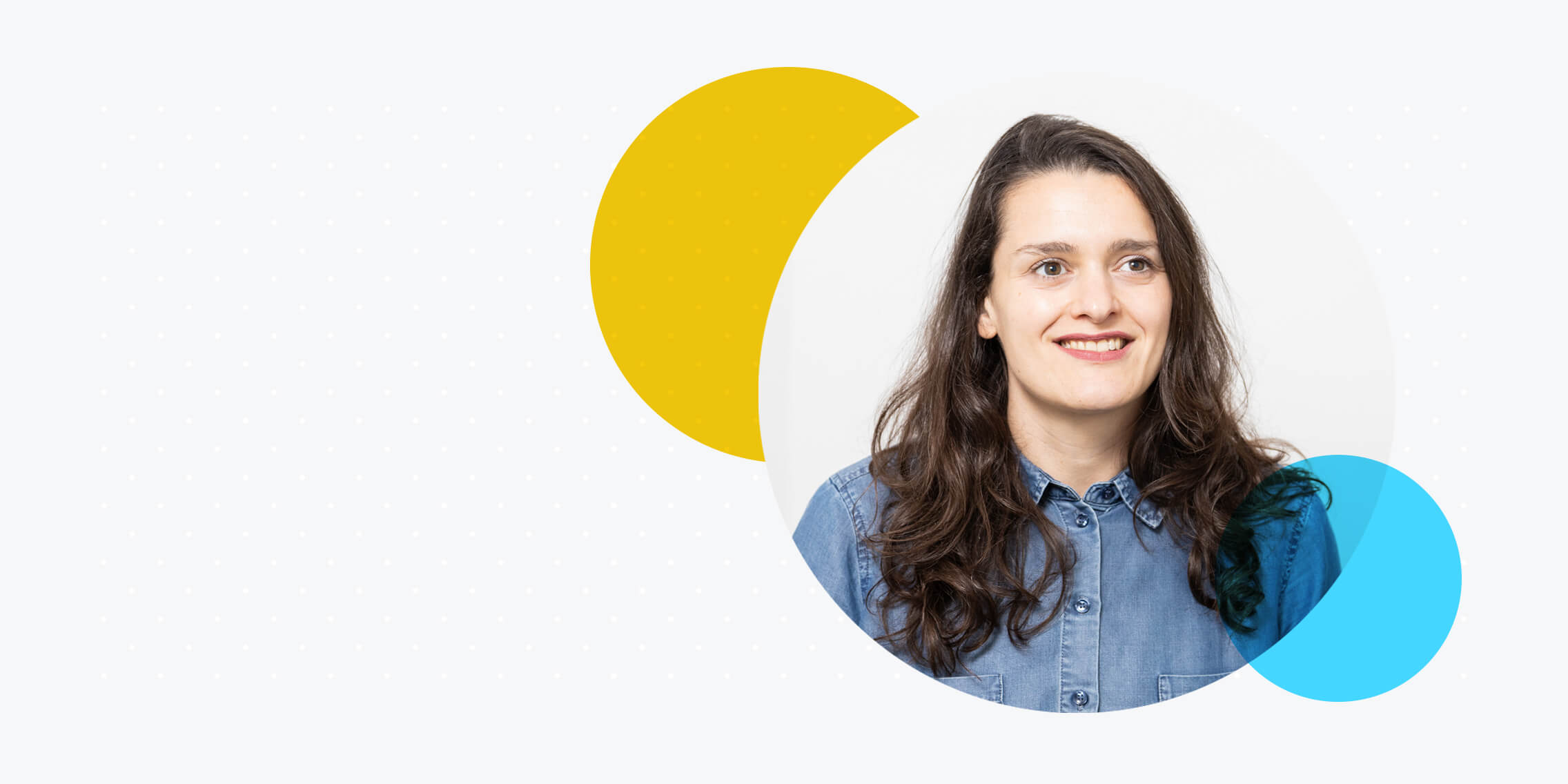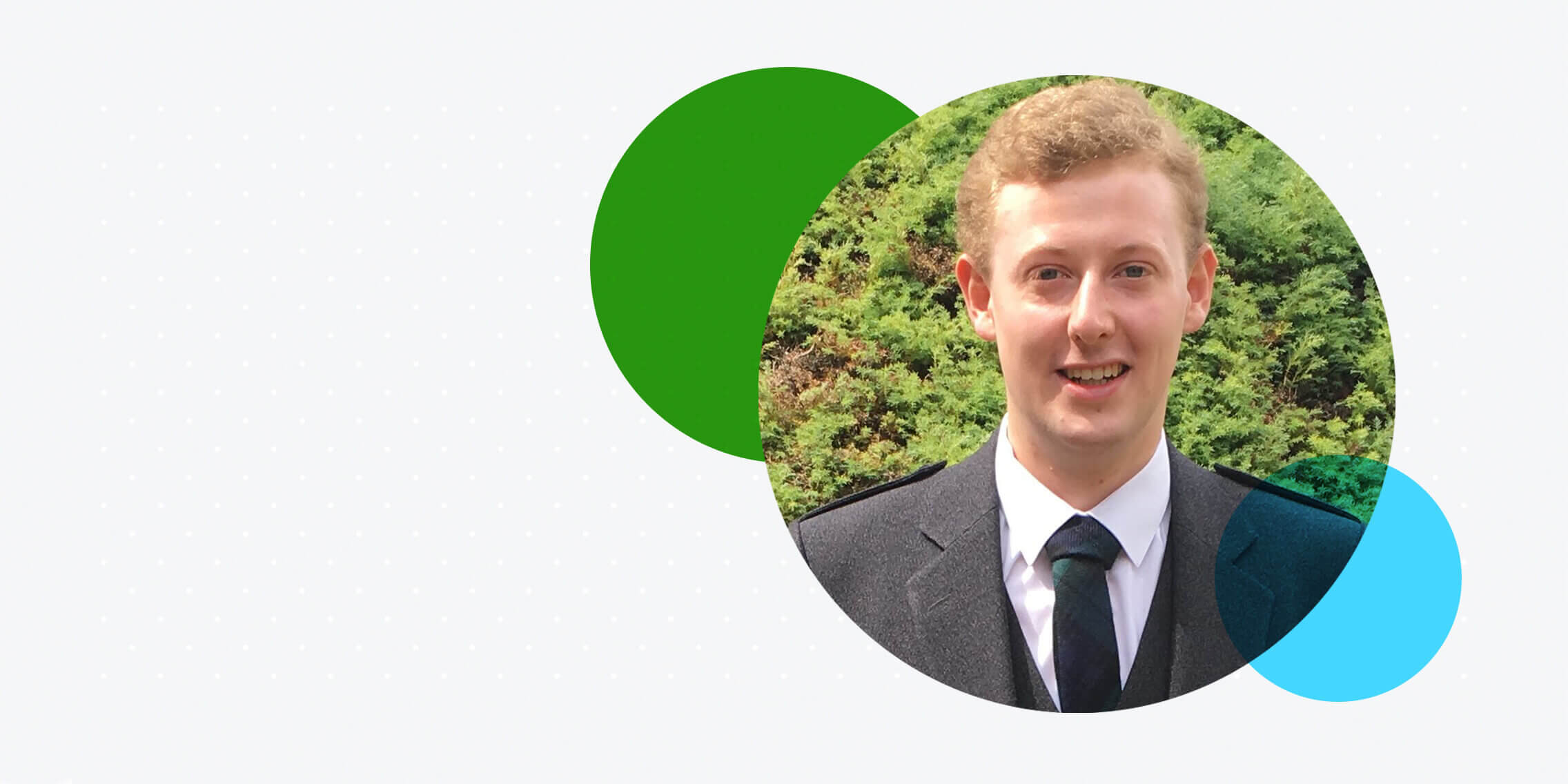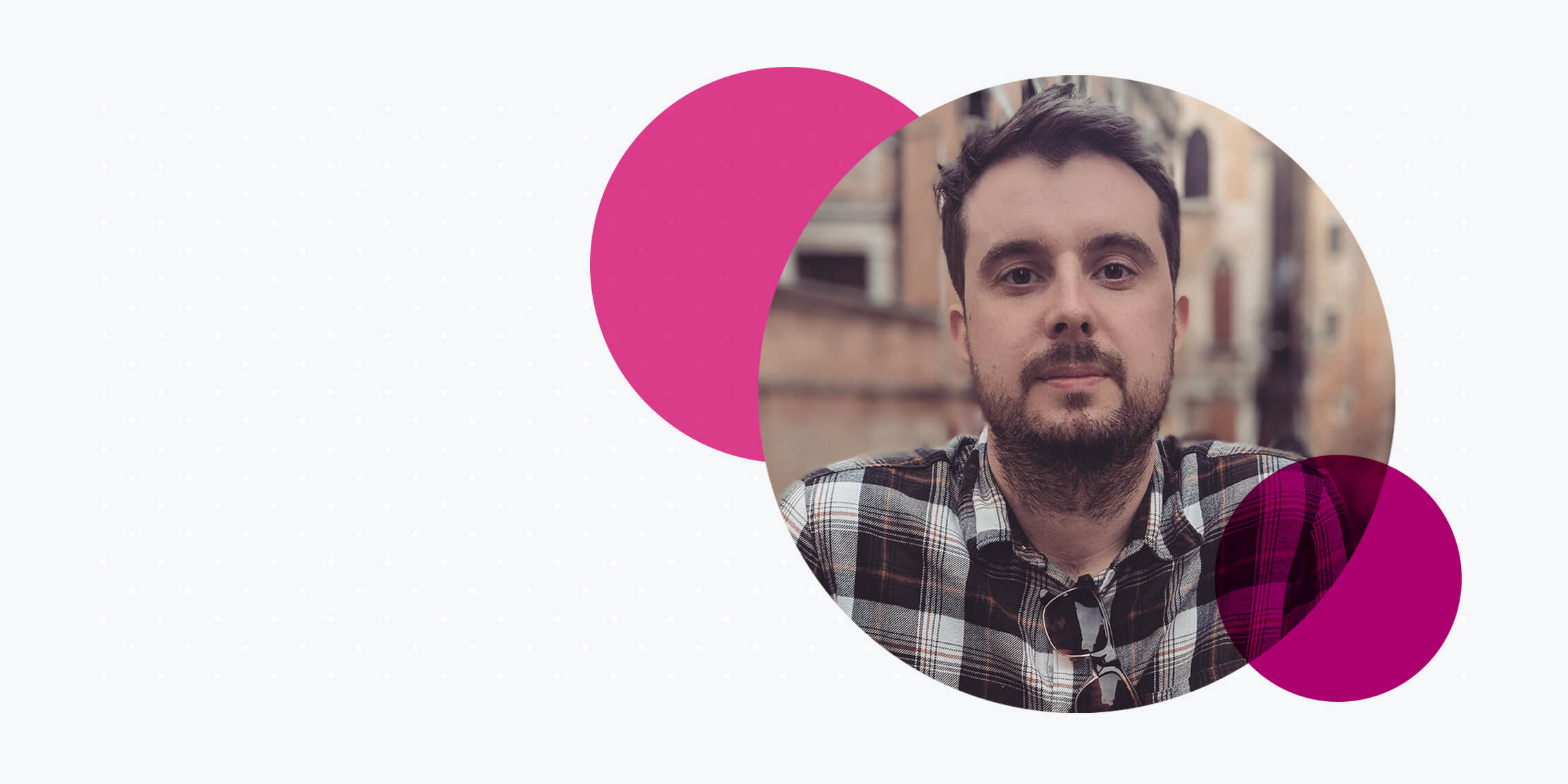Before that, he had struggled to find a role that he loved and had worked in graphic design, digital photography, a gym and even a trampoline park.
He spoke to us about how our Professional Diploma in UX Design gave him the edge when applying for jobs and how he used our online UX community to full advantage to move from photography to UX design.
Why did you pursue a new career?
When I was studying and working in graphic design I felt dependent on my teachers or my boss. If they didn’t like the designs, I would have to do it again. It was frustrating. That’s why I love UX because it’s not about your teacher or your boss, it’s about your users. And that’s a completely different story.
Before moving to UX I had also studied and worked in digital photography but I did not enjoy the industry. Because the digital world is changing so much, it’s difficult for photographers to get work. The salaries are getting lower and there is less and less freelance work.
How did you decide UX was the right career move?
I was looking for in-demand jobs and UX design kept coming up. I saw that it was a job that was in high demand and with a good salary. First, I wasn’t interested as I thought that UX design was like software development. Then, I read more about it and realised that I didn’t need to be able to code. During my research, I found the UXDI course and decided to make the investment.
Why did you choose our course above others?
Because it’s qualified by a university. That was very, very important. Another reason was that you assured me that you would help me make a portfolio. And the portfolio would be enough to go out there and get a job. Which is exactly what I did.
What was the course content like? Did you need technical knowledge?
I loved it! The course starts by talking about the psychology of users, how users want to feel, what product development is. That’s the background that I needed, because I didn’t know anything about products. I’m not a very technical person, I’m more a creative person. I didn’t know anything about psychology of users, but I already knew visual design from my graphic design experience.
The course taught me how to empathise with people. I always liked that, because in every job position I’ve taken this has been important.
Even though I had never worked with software before, I had no problems because the videos guided me through step-by-step.
I had also never worked in companies so I had no idea what that was like. I didn’t know that once you do something you have to show it to a supervisor, that you have to talk your way through a project and convince your team to take a certain approach. The course gave me the confidence to do that.
How did you manage your time while studying?
While I was doing the course, I was working at a trampoline park so I had plenty of time to think about my work and my studies. I was working part-time and I was networking full-time. There is a strong community in UX design overall and that really worked well for me.
Describe how you built your UX network.
I used Meetup and other apps to find the local communities.
The course gave me the confidence to do that; to go networking and be able to speak about UX design. It was at a networking event that I arranged my first interview, off the back of one of these informal chats.
At that stage, I was only two months into the course but I was already able to talk about the theory of UX. I was hungry and I wanted to learn. The interview went well and I ended up getting the internship because they knew I was invested in the industry and that I was already approaching UX in the right way.
Can you describe the role you’re in now?
I work for IES Ltd. and my job title is User Researcher/UX Designer. So my main focus is user research but I also look at the full UX design. I am the only user-researcher, so I take the lead on user research in all the projects I’m involved in.
Do you think that what you learned in the course set you up for your role?
Yes, it did. When I started, I did everything by the book, everything the way the course taught me. And now that I’m working in the company, I’m learning even more, I’m understanding more.
The course is why they invited me to interview and why they wanted me in the company. Because I’m a hungry person, willing to learn and because I have a university diploma in UX design.
How did you find the experience of online learning?
It worked very well because the course is very clearly structured. The videos were self-explanatory. I didn’t have any questions for my teacher because the videos told me everything.
How did the Slack community work?
It’s very cool, there are many different channels for many different things. There’s a random one where you just post interesting things about UX but then there is also job channels, portfolio channels and people giving you advice on what you should improve on your resume or your side projects. The classroom channel is where everybody supports each other and discusses any issues. It’s just like a normal classroom but online through chat.
How was the level of support during your studies?
Kelly was my course manager and supported me during the course. She’s a very positive person and she would help me a lot. She would give me final advice and I appreciated that. Not only did she give advice on projects, but also on my own website or LinkedIn.
There was a good sense of community because you never feel left by yourself. If you need support, you have it. If you need a critic, you have it. If you need someone to help on a personal project, then you have that too.
Describe your experience building your portfolio.
My course portfolio is how I got my job, it shows that you have the knowledge. You can talk about UX design, but you can also present a body of work.
One thing I learnt on the course was the value of sketches. I brought a full book of sketches to my interview, a really nice binder of sketches and notes and I gave it to the people interviewing me. They were delighted with it!
I think UX designers, supervisors, or senior UX designers look at your portfolio online. But hiring managers will look at stuff on paper, because it grabs their attention.
What was the biggest challenge of the course?
The course was perfect for me. It gives you everything you need to succeed in the career. But then it’s up to the person you are. It’s about your willpower, whether you’re willing to use the knowledge or not. I did. I used it 150% and I’m satisfied 150%.
What advice would you give someone considering enrolling in the diploma course?
Just do it. It’s university qualified and it gives you everything you need to get your job.
Honestly, if you compare it to other courses, other courses don’t stand a chance because they don’t have university backing. This course gives you the confidence, the portfolio, the knowledge and the ability to speak comfortably to stakeholders.




